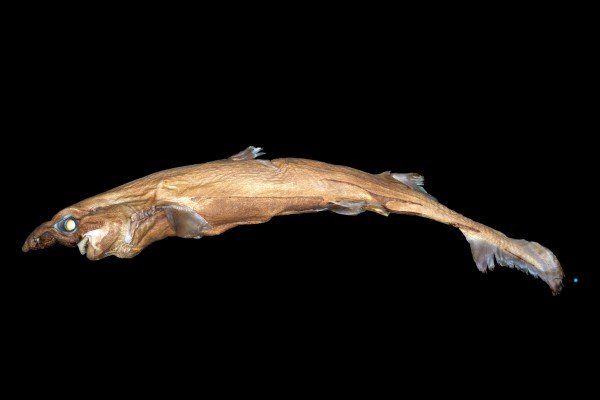
With an oversized hooked nose and a tiny body less than a foot long the latest undersea discovery by marine biologists is not a looker but, living at depths of 1,000 feet below the Pacific, the shark has adapted to its dim existence with the ability to glow in the dark.
The new species, Etmopterus lailae, is a member of the Lanternshark family a group of sharks that can glow in the dark and was identified by Professor of biological sciences Stephen Kajiura over a painstaking 17-year-long process to become one of only 450 known species of shark.
"You don't come across a new species all that often," Kajiura said in a press release. "A large part of biodiversity is still unknown, so for us to stumble upon a tiny, new species of shark in a gigantic ocean is really thrilling. This species is very understudied because of its size and the fact that it lives in very deep water. They are not easily visible or accessible like so many other sharks."
Related: How a shark attack saved 'Shark Week' star's life
Kajiura and his team at the Elasmobranch Research Laboratory in the Charles E. Schmidt College of Science at Florida Atlantic University did not realize that the fish they had discovered was a new species. Kajiura began working with the shark while he was still in graduate school at the University of Hawaii.
After the team submitted their findings to journal it became a possibility that in their research they had uncovered a new species never before seen in the wild. Its unique characteristics: its unusually shaped head and its bulgy nostrils allowing it to find food in its deep-sea environment set it apart. "These creatures are living in a deep sea environment with almost no light so they need to have a big sniffer to find food," Kajiura said.
It is not entirely clear why Lanternsharks have adapted to glow in the dark. Some theories posit the ability may ensure the sharks mate with the right species while others claim the the bioluminescence is used to attract prey or camouflage them from predators.
In 2000 Kajiura was part of the team that discovered the Viper Dogfish also in Hawaii, another kind of Lanternshark. This shark has a snake-like mouth filled with crooked, jagged teeth and is another deep-sea dweller.
Uncommon Knowledge
Newsweek is committed to challenging conventional wisdom and finding connections in the search for common ground.
Newsweek is committed to challenging conventional wisdom and finding connections in the search for common ground.
About the writer
Callum Paton is a staff writer at Newsweek specializing in North Africa and the Middle East. He has worked freelance ... Read more
To read how Newsweek uses AI as a newsroom tool, Click here.








